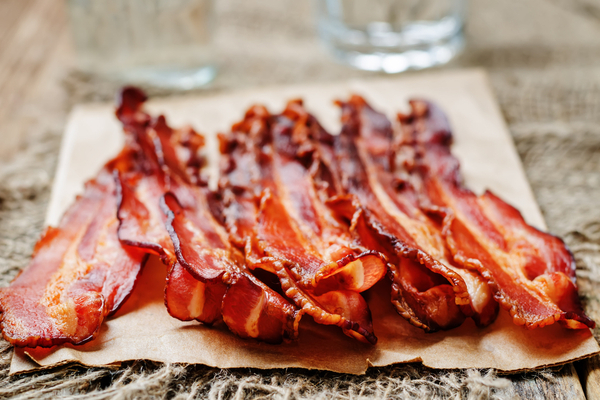National Bacon Day is celebrated December 30 each year. Not to be confused with International Bacon Day, which occurs the Saturday before Labor Day, National Bacon Day is another day on which “meat candy” lovers can enjoy their favorite food.
Here are Ten Things every self-respecting Bacon Lover should know:
History of bacon: Although the holiday was created in 1997 as a way to take a break from celebrating the traditional winter holidays, the consumption of pork dates back thousands of years to 4900 B.C. where the Chinese domesticated pigs and preserved pork bellies with salt. This practice is believed to have made its way to the Romans and Greeks through conquests in the Middle East and by 1500 B.C. had largely impacted both production and preservation of pork in the Roman Empire. Ancient Roman’s early form of bacon, or “petaso,” was pig shoulder broiled with dried figs, browned and served with wine.
Father of the American pork industry: Spanish explorer Hernando de Soto is credited with bringing pigs to the New World.
Not all Bacon comes from the Belly: The United States and Canada make bacon from the pork belly. Other countries around the world use the side and back cuts of pork. The meat is cured in either a salt brine or a salt pack. It is then either dried, boiled, or smoked.
Bacon, by any other Name: The word “bacon” can be traced back to various languages from before the 12th century. Most notably from the French word “bako,” the Germanic “bakkon” and the Old Teutonic word “backe,” all of which specifically refer to the rear of the pig. During the 16th Century, the word “bacoun” was used to refer to any kind of pork. And it wasn’t until the 17th Century that “bacon” was used solely to refer to the salted and smoked pork belly that we know today.
The Golden Age of Pork: Considering how easy and cheap it was to own pigs, its no wonder during Medieval Times bacon was very common among Anglo-Saxon peasants. Each family and butcher had their own recipe for curing and smoking bacon. The sheer variety of bacon, sausage, and black pudding that you could buy in Victorian England created an almost golden age of pork.
Bacon isn’t just for Breakfast anymore: While breakfast remains a breakfast staple, bacon finds its way into other meals of the day, with bacon bits being sprinkled on salads and soups, BLT’s, BLAT’s and Club Sandwiches with bacon now considered lunchtime staples, bacon-wrapped (anything, really) as a popular appetizer, and candied bacon even being added to Bloody Mary cocktails and Maple ice-cream. The possibilities are endless.
Bacon in pop culture: Bacon has taken on a life of its own in pop culture. Homer Simpson has made his love of bacon well-known on “The Simpsons.” You can also find many items flavored or scented with bacon, including popcorn, soap, candles, air fresheners, and much more. And if you want to tell the world how much bacon means to you, this food adorns everything from t-shirts, socks and hats to gift wrap and even Christmas ornaments.
Perhaps it’s time to Bring Home the Bacon: The popular phrase “bring home the bacon” can be traced to the 12 century, in the English town of Dunmow. The church promised to reward a side of bacon to any married man who swore before God and the congregation that he would not quarrel with his wife for a year and a day.
Bacon’s popularity is unwavering: Even with a focus on healthier eating nowadays, bacon remains one of the most popular food items in the U.S., generating billions of dollars in annual sales. In 2020, over half of the U.S. population said they used a pound or more bacon that year.
Alternatives to pork bacon: Turkey bacon is a popular alternative to pork-based bacon. Consumers may also find bacon made of beef, duck, lamb and venison. Vegans can even find plant-based versions of bacon. Why? Because even if you’re not eating pork, that bacon flavor just can’t be beat!
—
Photo Credit: Nataliya Arzamasova / Shutterstock.com
